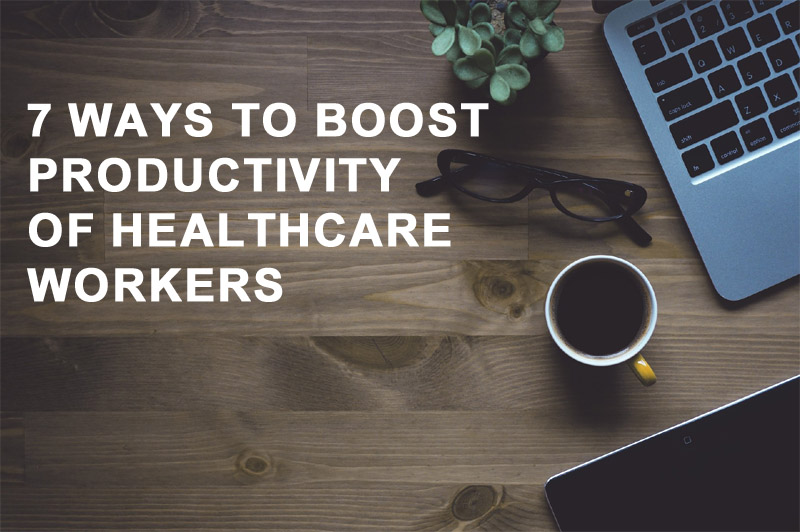
Productivity is a big concern, especially for the healthcare industry. With increased work pressure and changing medical needs, healthcare workers are often stressed out or exhausted. As patients keep pouring in, usually workers are required to do extra shifts or may even have to cancel their leaves, adding on to their woes, which results in reduced productivity.
But amidst the chaos of delivering quality care to patients, healthcare organizations either ignore or miss out on looking after their employees. If a healthcare worker doesn’t perform, it is directly going to hit the health systems or organization’s productivity and overall performance, which is not a good thing to happen. Hence, healthcare employers must come forward and pay special attention to finding out the causes of low employee productivity and must work towards addressing the concern.
Here are some of the ways following which healthcare organizations can give a positive boost to the productivity of their workers:
Streamline and Optimize Workflow
No matter how much is the staff strength of your healthcare organization or how many specialties you focus, a streamlined and well-structured workflow is a must to ensure better productivity of your employees. Often, the reason for low productivity among healthcare workers who are always on their toes to deliver care is overlapping or repetitive work. Due to staff shortage or cost-saving tactics of organizations, excess work comes on a limited number of workers. As a result, hospital or clinic employees end up doing overwork, which takes a toll on their physical and mental strength and impacts overall productivity.
Moreover, healthcare professionals and workers are always under immense pressure to deliver quality care and excellent patient experience. Also, complexity in workflow often limits healthcare worker’s productivity. For instance, in some healthcare systems, medical information is not readily available to professionals for quick response to any medical situation. This inefficient workflow settings leads to confusion and hinders employee’s ability to perform. All these add up to the exhausting performance of healthcare workers. Hence, if healthcare organizations want their employees to perform better, they must pay attention to ensuring a streamlined workflow. They must fill in the gaps and review existing workflow to make necessary changes and work towards an organized and efficient healthcare workflow across their organization.
Here are some steps to combat the workflow inefficiencies in your healthcare organization:
- Assess your current workflow and process.
- Document your assessment report and findings.
- Identify where things are getting slow.
- Find out who is responsible for the breakdown.
- Determine methods to solve the issue for a seamless workflow.
Embrace Technology
There is always a benefit of using technology in a healthcare system. The modernization of healthcare IT through digital intervention and technological advancements, the healthcare environment has completely transformed for good. Adoption of technological supports workflow and increase the productivity of medical workers as it reduces mistakes often caused by manual setup. Moreover, as healthcare regulations and standards keep changing, it becomes even more essential for organizations to embrace technology to combat competition.
Technology can surely help healthcare organizations boost the productivity of their employees by allowing them to perform their tasks efficiently. Using advanced tools and software, professionals can better manage information, make the best use of time and resource and also reduce the errors that may have been cost their organization and decreasing productivity at the same time.
Technologies that can improve healthcare productivity include:
- Case Management Software
- Policies and Procedure Management Software
- Electronic Health Record Software
- Patient Feedback Software
- Patient Safety/Risk Management Software
Use Communication App
Communication is an essential part of a healthcare worker’s job. Not only do nurses, clinicians, pharmacists, and others need to communicate with the patient, but also they require to communicate with each other to perform their duties efficiently. That is when the need to use a communication app arises.
In an interactive space like that of the healthcare, workers and professionals need apps that can help them coordinate with various departments and with co-workers to deliver timely care to the patients. Using communication apps, healthcare workers can do more within their given shift. Hence, the use of apps as a tool to boost productivity in the healthcare industry is highly recommended to healthcare organizations.
Offer Rewards to Engage Employees
If there is a decline in the productivity level of your healthcare employee, the reason may be that they are disengaged. About 70 percent of American workers report some or other disengagement reasons with their jobs. Even healthcare workers and medical professionals are no different. They too have some level of disappointment and disengagement which leads to low productivity level, costing millions of dollars of loss to the organization.
As per the latest findings of MedicoReach, the best way to engage employees is to offer them rewards and incentives. It is not necessary that reward always has to be monetary. Social recognition or appreciation of the hard work of your healthcare employees can be the reward that the employee has been missing out, causing a decline in his/her productivity.
In addition to showing gratitude for their work, you can incentivize your healthcare employees in different ways:
- Send them a handwritten note, recognizing their work and appreciating the same.
- Implement a workplace wellness program as the health of nurses, pharmacists, and other healthcare workers are equally important. If they are well, the number of sick leaves will be less, increasing work productivity.
- Give them a salary hike or bonus.
- Offer them gift coupons or take out for team outings whenever possible.
Show that You Care
For one or the other reason, your healthcare employees may feel demotivated and disengaged, which eventually results in their unproductivity. The reasons for such a behavior can be anything from finding the work boring to feeling neglected and underpaid for the increasing amount of work they are doing. Or simply they may think that the organization they work for doesn’t care about what their employees want or need.
If you want to discard all such feelings from your employee’s mind, then start showing them that you care and value their contribution and association with your healthcare business or brand. You can give rewards or even praise their efforts. All these gestures will help you win their trust and encourage them to give their best for the organization.
Set Realistic Goals and Measure Performance
Setting goals is crucial for any business. All the departments of an organization must know their specific goals for which they are responsible and work towards achieving it. Even in the healthcare industry, organizations must clearly define goals to their employees. Specifying objectives will motivate employees who will turn more productive in achieving success.
Once the goal is set, the next thing to do is measure the performance of your healthcare employees and reward them whenever they reach their goals successfully. To improve productivity, managers need to encourage quality work and use analytics to enable better staffing so that the best patient care services are delivered. Healthcare organizations must regularly check the progress of their employees towards achieving the set goal and keep track of their development and mistakes at the same time.
Encourage a Healthy Work Environment
Organizations that outperform others are the ones who encourage an atmosphere of learning and collaboration. If you want to boost employee productivity in your healthcare organization, then create an open environment where employees can grow and thrive through education and sharing experiences with their peers. Healthcare industry is a serious workspace where medical professionals and workers have to work under immense pressure and deadlines as the well-being of a patient depends on them. However, they can only perform their duties efficiently when they are themselves mentally and physically fit.
Employees can perform well when the work culture and environment are encouraging and comfortable. If they receive good rewards, positive treatment from the employer, and skill training programs, their productivity is likely to increase, which will help the organization as a whole.
Conclusion
If you want a high productivity level of your healthcare workers or employees, then the first thing you must understand and implement is ensuring a healthy and happy work environment. You must know that working in a healthcare setting is challenging and tedious. Healthcare care workers have to work for long hours at times, even without any break in case of emergencies. Hence, what least you can do to ease the work tension is offering them growth-oriented workplace where they are valued, appreciated, and respected for their contribution.
Remember, healthcare workers will work beyond their ability only when they enjoy benefits and rewards at the workplace and are never overlooked.

